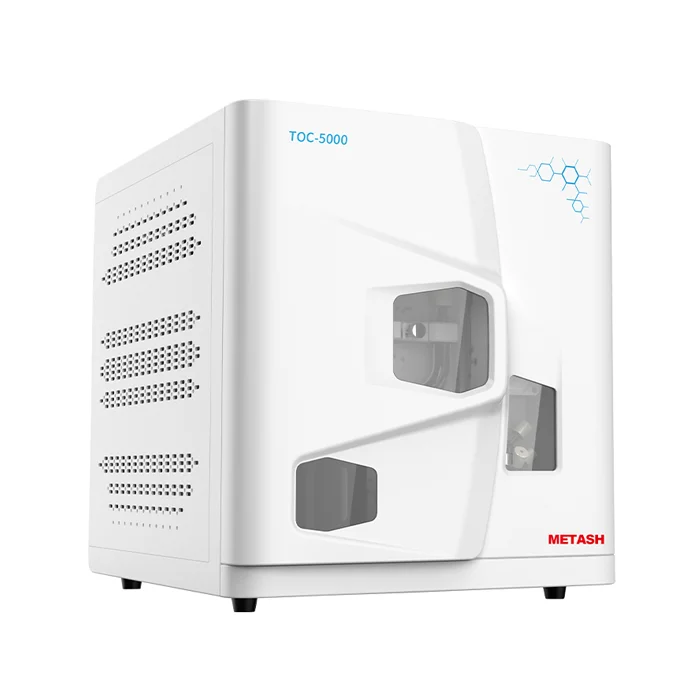- This topic is empty.
-
AuthorPosts
-
28/11/2024 at 18:32 #152601
The Total Organic Carbon (TOC) Analyzer is a sophisticated instrument used to measure the concentration of organic carbon in water samples. It plays a crucial role in assessing water quality, monitoring pollution levels, and ensuring safety standards in various industries. In this blog post, Metash will share the working principle of TOC Total Organic Carbon Analyzer.
1. Principle of Operation
The TOC Analyzer functions on the principle of converting organic carbon compounds in water into carbon dioxide (CO2) and then measuring the concentration of this CO2. This process is based on the fact that all organic matter contains carbon, and by oxidizing the organic matter to CO2, the total organic carbon content can be determined.
2. Technical Working Process
The technical working process of a TOC Analyzer can be broken down into several key steps:
a. Sample Preparation
The first step involves preparing the water sample. This may include filtration to remove particulates that could interfere with the analysis.
b. Oxidation
In the oxidation stage, the sample is exposed to a strong oxidizing agent, often at high temperatures. This process breaks down the organic compounds into CO2. The most common methods for oxidation include:
– Wet Oxidation (Persulfate) – Non-Dispersive Infrared Detection (NDIR): This method involves treating the sample with an oxidizing agent like persulfate to break down the organic matter.
– High-Temperature Catalytic Combustion Oxidation – NDIR: This method uses high temperatures to combust the organic matter, which is particularly effective for samples with higher pollution levels.
– UV Oxidation – NDIR: Ultraviolet light is used to initiate the oxidation process, suitable for certain types of water samples.
c. Detection
After oxidation, the CO2 produced is detected. The most common detection method is NDIR, which measures the concentration of CO2 by its absorption of infrared light. This method is chosen for its high sensitivity and accuracy.
d. Data Processing
The final step involves processing the data to convert the measured CO2 concentration into the total organic carbon concentration in the original water sample. This is done using the known relationship between CO2 and organic carbon.

3. Advantages of TOC Analyzers
TOC Analyzers offer several advantages, including high sensitivity, accuracy, and ease of operation. They are capable of measuring very low levels of organic carbon, down to the microgram per liter range, making them suitable for a wide range of applications from environmental monitoring to pharmaceutical quality control.
4. Applications
TOC Analyzers are used in various fields, including environmental monitoring, water treatment, pharmaceuticals, and food processing. They help in assessing the pollution level of water bodies, monitoring the effectiveness of water purification processes, and ensuring the quality and safety of products.
Conclusion
TOC Analyzers are indispensable for monitoring organic contamination across various industries. As analytical demands grow, advances in TOC analyzer design continue to improve sensitivity, automation, and reliability, ensuring these tools remain at the forefront of environmental and industrial analysis.
http://www.metashcorp.com
Metash -
AuthorPosts
- You must be logged in to reply to this topic.